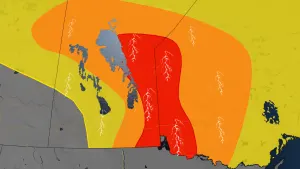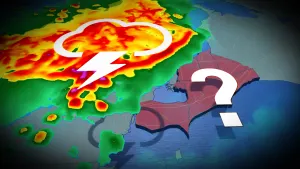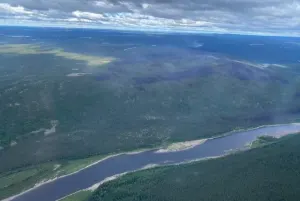
The world is not their toilet: Study says dog poop may harm nature reserves
Researchers say they were surprised by the findings.
Dog urine and feces add a "significant" amount of phosphorous and nitrogen into the environment, and that could threaten biodiversity in nature reserves, according to a new study by researchers at Ghent University.
The authors estimate each dog releases an average of 11 kg of nitrogen and 5 kg of phosphorous per hectare in the form of waste in nature reserves near Ghent, Belgium.
That amount is not insignificant: by comparison, fossil fuels and agriculture add between 5 and 25 kg of nitrogen per hectare to European soil annually.
Nearly all of the phosphorous comes from dog feces, while dog urine deposits both nitrogen and phosphorous.
Professor Pieter De Frenne, lead author of the study, says his team was surprised by the findings.
"Atmospheric nitrogen inputs from agriculture, industry, and traffic rightfully receive a lot of policy attention, but dogs are entirely neglected in this respect.”
To form their conclusion, researchers counted the number of dogs in four nature reserves 487 times over 18 months. They then modelled different scenarios, including versions where the dogs were leashed (as required by law at all the reserves) or unleashed. The researchers also looked at the differences in environments where the feces was picked up versus left in place.
In leashed dog scenarios, fertilization rates decreased inside the reserves but spiked around designated paths, generating an annual input upwards of 175 kg of nitrogen and 73 kg of phosphorus per hectare.
When owners picked up after their leashed pets, nitrogen levels dropped by 56 per cent and phosphorus levels dropped by 97 per cent.
WHY IS DOG WASTE HARMFUL TO NATURE RESERVES?
Phosphorus and nitrogen act as fertilizers - but not all growth is promoted equally. The study authors say the nutrients released in dog waste only help a select number of plant species, which could lead those plants to outcompete others and reduce overall biodiversity.
“In many nature reserves, the management is specifically directed towards lowering soil nutrient levels to enhance plant and animal biodiversity. This can be done through methods like mowing and hay removal.” Professor De Frenne says.
“Our findings suggest that the currently neglected inputs of dogs in nature reserves could delay restoration goals.”
The full paper can be found online in the journal Ecological Solutions and Evidence.
Thumbnail image: Liz Tremblay/Pexels.










